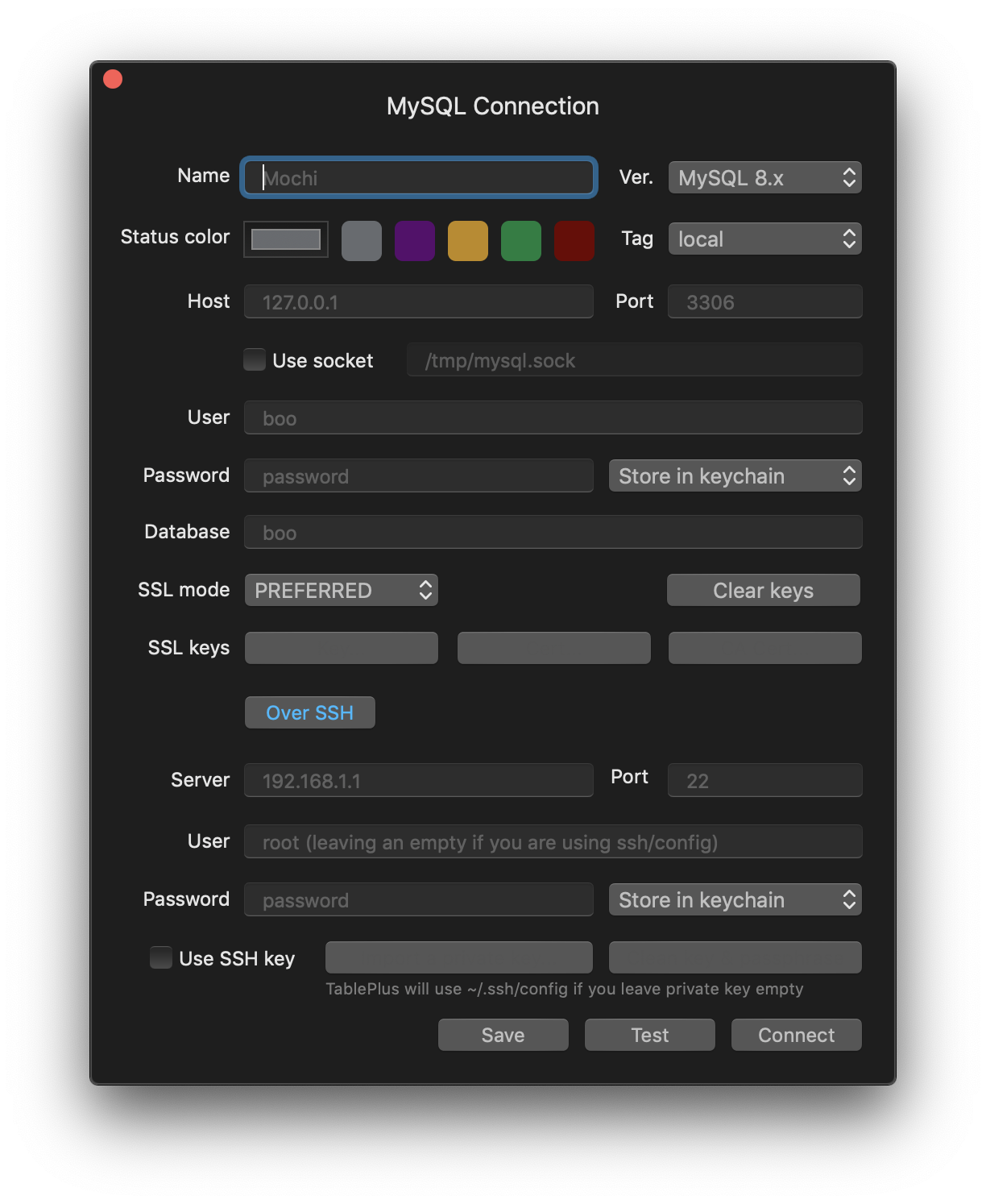
For more information, see the TLS to Apps and Other Back End Services section of the HTTP Routing topic. Note: If you have mutual TLS between the Gorouter and app containers, app containers accept incoming communication only from the Gorouter. The technique outlined below works with TCP services such as MySQL or Redis. To establish direct command line access to a service, you deploy a host app and use its SSH and port forwarding features to communicate with the service instance through the app container. For example, you may need access to your database to execute raw SQL commands to edit the schema, import and export data, or debug app data issues.
#Mysql ssh tunnel how to
This topic describes how to gain direct command line access to your deployed service instance. This page assumes you are using Cloud Foundry Command Line Interface (cf CLI) v6.15.0 or later.
#Mysql ssh tunnel Offline

Streaming App Logs to Azure OMS Log Analytics.Service-Specific Instructions for Streaming App Logs.Streaming App Logs to Log Management Services.Using an External File System (Volume Services).Configuring Play Framework Service Connections.Delivering Service Credentials to an App.Routing HTTP/2 and gRPC Traffic to Apps.Configuring CF to Route Traffic to Apps on Custom Ports.Troubleshooting App Deployment and Health.Using Blue-Green Deployment to Reduce Downtime and Risk.Starting, Restarting, and Restaging Apps.Deploying a Nozzle to the Loggregator Firehose.Installing the Loggregator Plugin for cf CLI.Monitoring and Testing Diego Components.Configuring Health Monitor Notifications.Configuring Diego Cell Disk Cleanup Scheduling.Configuring SSH Access for Cloud Foundry.Running and Troubleshooting Cloud Foundry.Configuring Load Balancer Health Checks for CF Routers.Getting Started with the Notifications Service.Creating and Managing Users with the UAA CLI (UAAC).



 0 kommentar(er)
0 kommentar(er)
